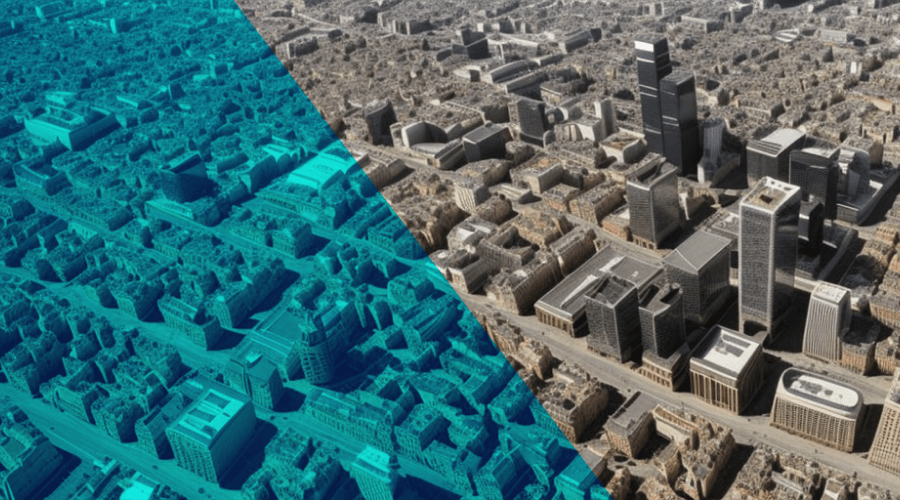From permissions to privacy changes and strategic best practices, explore how geo-targeting and geo-zones can revolutionize your mobile engagement.
In our rapidly evolving digital landscape, one powerful tool stands out for its ability to enhance mobile engagement: location-based messaging. Through geo-targeting and geo-fencing, businesses across sectors can offer personalized experiences, timely alerts, and targeted promotions, all tailored to a user's location. This guide is a comprehensive resource to navigate these strategies effectively and responsibly.
Location-Based Marketing: The Fundamentals
At its core, location-based marketing (LBM) is the practice of customizing marketing efforts to a person's location. It leverages the power of geo-location data from smartphones to deliver timely and relevant content that matches a consumer's real-time whereabouts.
From personalized advertisements and promotional offers to in-the-moment alerts and information, location-based marketing helps businesses provide context-driven interactions. It consists of strategies such as geo-targeting (delivering content to a user based on their overall location), geo-fencing (delivering content to a user when they enter a specific predefined area), and proximity (providing content to a user when their device comes in the vicinity of a BTLE beacon).
Differences Between Geo Fences and Geo-Targeting
Both geo-zones and geo-targeting are strategies in location-based messaging, but they have distinct characteristics.
A geo-zone, or geofence, is a virtual boundary set around a specific location. When a user enters or exits this boundary, it can trigger an action or notification in an app. This technology can be highly beneficial for businesses with physical locations, such as retailers or restaurants, as it allows them to send targeted notifications to users who are nearby or who have just left the area.
On the other hand, geo-targeting involves delivering content or advertisements to a user based on their geographic location, which can be as broad as a city or as specific as a ZIP code. This can be useful for businesses that operate in different regions or countries, allowing them to send location-specific content or offers.
Understanding Radius and Polygons
In the context of location-based messaging, radius, and polygons refer to the area around a point of interest where notifications can be triggered.
The radius denotes a circular area around a point. If a user enters this area, the app can trigger a location-based notification or action. For example, set a radius of 500 meters around your store location to send a promotional offer to users who come within this area.
Polygons offer more precision (although they will consume more energy), as they can denote complex, multi-sided areas rather than just circles. This could be useful for more extensive or irregularly shaped areas, such as a shopping district or a downtown area.
The Importance of Permissions and Re-Permission Campaigns
One of the most critical aspects of successful location-based messaging is permissions set on the user's smartphone. If a user still needs to grant your application the necessary permissions to access their location, the capacity to send relevant, contextual messages is significantly reduced. As such, it's essential to encourage users to enable these permissions and educate them on the benefits they can receive as a result, such as personalized offers and notifications about nearby services or products.
If a user initially denies these permissions, it's not a closed door. You can launch re-permission campaigns, which are strategies designed to encourage users to reconsider and enable location permissions. These campaigns typically involve explaining the benefits and use of location data more explicitly or offering incentives only available with location permissions enabled. In a previous post we've explained How to get better Location Services opt-ins
Impact of Privacy Changes on iOS and Android
Both iOS and Android have been placing more emphasis on user privacy, which has impacted how apps can use location data. Apple's iOS 14, for example, introduced more granular controls over location permissions, allowing users to choose between sharing their precise location or a general area, and Android 10 also introduced similar controls.
While these changes can make it harder to gather precise location data, they underscore the importance of getting clear permission from users and providing value in return for their data. As we've covered, this can involve explaining the benefits of location data more explicitly or running re-permission campaigns.
3 Best Practices
Did you know that location-based marketing is revolutionizing the way retailers, mobility providers, and hospitality businesses interact with their customers? Check out these examples of how it's being used to create personalized experiences and boost customer loyalty.
Retail
Use geo-zones around your store locations to send targeted offers to nearby customers. Consider offering exclusive discounts or limited-time sales for users who enter these geo-zones.Mobility
Use location data to provide real-time updates, such as traffic alerts or transit times. You could also use geo-targeting to promote specific services in areas where they're available. Consider offering personalized navigation assistance based on the user's location. In cities with mobility services, a geo-zone could trigger a notification about the nearest available unit.Hospitality
Use geofencing to provide a personalized experience for your guests. For instance, a geo-trigger could start an automated check-in process when a guest arrives at your hotel or send personalized suggestions for local attractions or dining based on their location. Additionally, leverage location data to offer room upgrades or special deals when guests are nearby, enticing them to extend their stay or visit again in the future.
Maximizing LBM Success
Harness the power of location-based messaging responsibly to create personalized, meaningful experiences for your users. Remember, offering value in exchange for their data through personalized offers, real-time updates, or location-specific content is key.
If you need assistance setting-up geo-zones, geo-targeting, or running re-permission campaigns, our support team is always ready to help.


